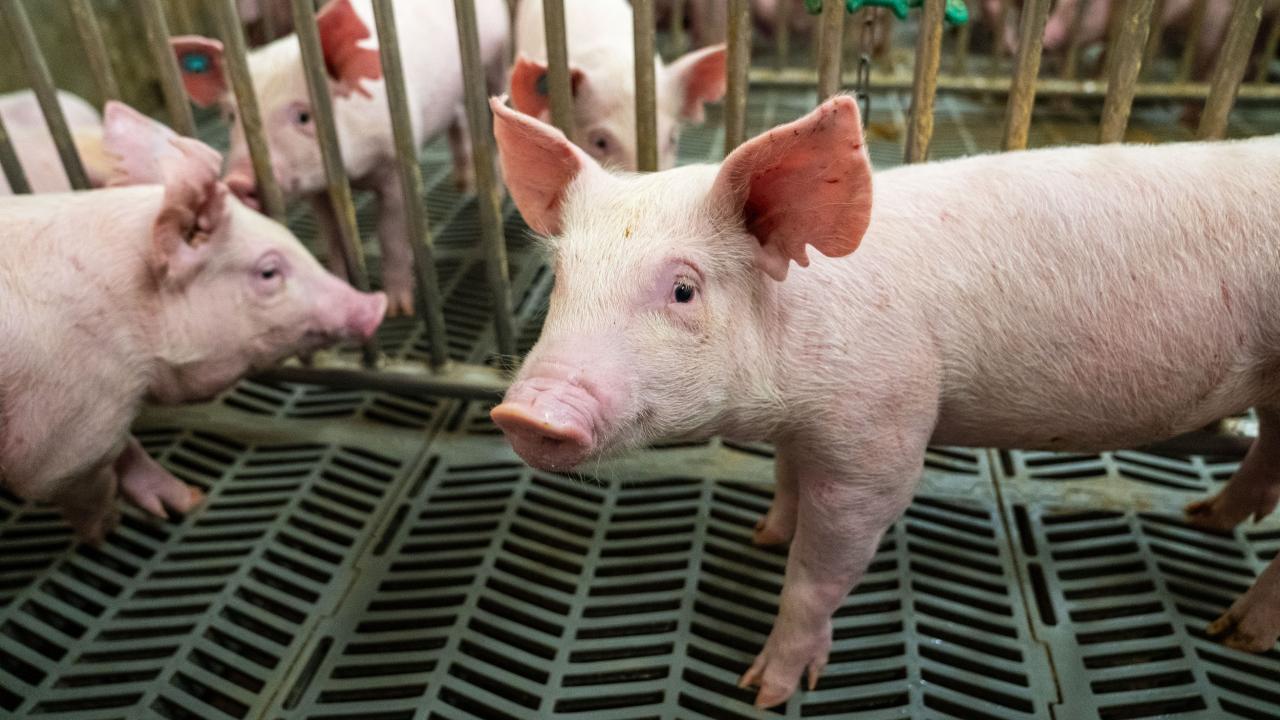
How is CRISPR different than GMO foods?
Technology is helping to transform agriculture and the way food is produced. And while a new era in agriculture is being ushered in, it’s important to understand that technology. For example, though GMO’s and gene editing are often mentioned in the same breath, they are fundamentally different.
Let’s dive in and understand the differences between genetically modified organism (GMO) and CRISPR.
While GMO and CRISPR technologies both aim to make farming more sustainable by reducing the need for pesticides, water, and other resources, GMOs involve transferring genes between species, while CRISPR precisely edits genes within the same species to speed up natural improvements. Both have the potential to produce healthier, more nutritious food and allow farmers to grow crops with fewer agricultural chemicals and less water. Or put into simpler terms: CRISPR has the ability to manipulate a plant’s or animal’s own genes to create new traits, as opposed to genetic modifications that get new breeds labeled as GMO.
The ABCs of GMO
The word ‘GMO’ can sometimes make people uneasy or even a little nervous. But let’s understand why GMOs can benefit consumers by making food more nutritious, affordable, and accessible.
The first genetically modified organism (GMO) food crops were introduced in the 1990s and have since then been shrouded in controversy. The main issue with GMOs that critics oppose is the introduction of “foreign DNA” that critics believe may have unintended consequences in the consumer. As a result, the commercialization of GMO crops has faced considerable legal challenges (and high expenses).
A lot of the food we eat today comes from traditional breeding methods and some from selective breeding—which relies on the natural emergence of variants with a desired trait, resulting from occasional random DNA changes, or mutations, that naturally occur during reproduction
But those methods can take a long time and don’t allow for very precise changes. That started to change in the 1970s, when scientists developed genetic engineering—which made it possible to make the same kinds of improvements much faster and with greater accuracy.
CRISPER 101
One of those improvements was gene editing (also known as genome editing or CRISPR), which is the latest advance in genetic engineering. Gene editing via CRISPR is a technology that allows researchers to correct, delete, add or modify the DNA sequence of a gene. It is faster, quicker, and much more specific than GMOs.
That said, it does require extensive knowledge about the genome sequence and gene function, which is now available to scientists due to advancements in molecular genetic techniques.
This is how it works.
Gene editing uses highly specific enzymes that act like scissors to cut the two DNA strands at a specific location. CRISPR involves the process of gene editing and there are many ways to use it. One is to cut a chromosome in a specific spot, let it repair itself, and form a mutation that knocks out a detrimental gene.
Messages to remember:
-it’s not about inserting genes from other species
-it’s about making small, targeted changes to the animal’s own DNA-like turning off or adjusting specific traits.
Dawn Cayabyab, a Ph.D. student in the Department of Animal Science at UC Davis is using CRISPR gene editing to tackle some of agriculture’s toughest challenges through precise, science-driven solutions like CRISPR.
“CRISPR is a gene editing tool that we can think of as a pair of molecular scissors, and we can take those scissors and guide them to a specific location in the genome and make a precise cut in the DNA. And so, the cell has these natural repair mechanisms to try to repair that break in DNA. And we can take advantage of that mechanism to introduce our desire genetic alterations, such as disabling a gene or inserting new DNA or correcting mutations.”
And researchers are seeing how gene editing could significantly improve outcomes for producers.
“CRISPR/Cas 9 can make genomic selection more efficient for producers in that with gene editing, you can select for your desired phenotype or trait at the cellular embryonic level before producing an animal,” Cayabyab said. “So, it cuts down on the costs that come with breeding, with traditional practices, as well as save on resources and animal use.”
Cayabyab explained that she sees a key distinction between naturally occurring genetic changes and intentional edits made with tools like CRISPR/Cas9.
“I think genetically modified organisms for GMOs is just a term to describe how humans have selected certain organisms based on their traits or what they expressed,” Cayabyab said. “Whether that's naturally occurring or not, just because there are mutations that are considered genomic modifications that can occur naturally without human intervention, whereas with genetic alterations with CRISPR/Cas 9, we're going in to make those alterations or edits with intention. So, for me, that's where I see a big difference is in those terms.”
Insung Park, who is a postdoctoral scholar in the College of Agricultural and Environmental Sciences at UC Davis has been working with CRISPR to find a way of preventing boar taint.
CRISPR relies on the cell’s innate ability to detect and repair DNA damage, a process that researchers can harness to make precise genetic changes
“Cells, they have their own like repair system. So, when you make a cut, it's initiating those repair systems, “Park said.
Again, the big difference for researchers is the speed of making changes to prevent diseases and enhance animal welfare.
Dr. Trish Berger is a distinguished professor at the University of California Davis Department of Animal Science, and she has seen firsthand how CRISPR makes it possible to quickly target and remove specific genes instead of relying on traditional breeding over many generations.
“Rather than going through generations and generations of selection and screening animals to find an animal that has a deletion in its protein you can relatively easily eliminate it so then you can study its effect, or you can use its absence to create an animal that is healthier,” Dr. Berger said.
Both gene editing and GMOs represent powerful tools with the potential to impact many aspects agriculture.
Q and A:
What’s the difference between GMOs and gene editing with CRISPR?
GMO (Genetically Modified Organism) technology involves adding genes from one species into another—like putting a bacterial gene into a plant.
CRISPR gene editing, on the other hand, makes precise, small changes to the plant or animal’s own DNA. No foreign genes are added—it’s more like speeding up what could happen naturally.
Why is CRISPR seen as more acceptable than GMOs?
Because CRISPR doesn’t involve inserting foreign DNA, it often feels more natural to consumers—and regulators agree. In many cases, gene-edited foods are not classified as GMOs, which can make the approval process faster and less controversial.
How does CRISPR actually work?
Think of CRISPR like molecular scissors. Scientists guide these “scissors” to a very specific spot in the DNA, make a cut, and let the cell’s natural repair system do the rest—either by removing a faulty gene, fixing it, or inserting a helpful one.
What kinds of problems can CRISPR help solve in agriculture?
CRISPR can:
- Make crops more drought- or pest-resistant
- Improve animal health and reduce disease
- Lower the need for antibiotics in livestock
- Speed up breeding for better nutrition, flavor, or sustainability
The CLEAR Center receives support from the Pork Checkoff, through the National Pork Board.
